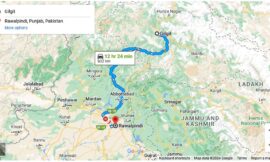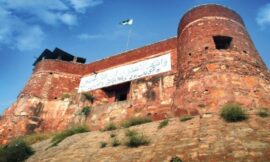Beirut, the capital and largest city of Lebanon, is a fascinating blend of history, culture, and resilience. Nestled along the eastern Mediterranean coastline, this city has weathered centuries of turmoil, yet it continues to stand as a testament to the indomitable spirit of its people.
The roots of Beirut trace back thousands of years, with evidence of human settlement dating as far back as the 15th century BCE. Throughout its long history, Beirut has been a hub of trade, culture, and scholarship. In ancient times, it was a flourishing Phoenician city known as Berytus, serving as a key maritime center for the Phoenician civilization.
Over the centuries, Beirut endured the rule of various empires, including the Roman, Byzantine, and Ottoman empires. Each conqueror left its mark on the city, contributing to the diverse architectural and cultural tapestry that defines Beirut today. The city’s rich history is reflected in its archaeological sites, such as the Roman Baths and the Roman Columns, which stand as reminders of its ancient past.
In the 20th century, Beirut underwent significant transformations, emerging as a cosmopolitan city and the “Paris of the Middle East.” However, the city’s fortunes took a drastic turn during the Lebanese Civil War (1975-1990). Beirut became a battleground, and the scars of that conflict are still visible in the bullet-riddled facades and war-torn buildings that dot the urban landscape.
Despite the challenges, Beirut has managed to rebuild and reinvent itself. The post-war era saw the city slowly reclaim its status as a cultural and economic hub. The vibrant neighborhoods of Hamra and Gemmayzeh, with their trendy cafes, art galleries, and nightlife, showcase Beirut’s resilience and determination to move forward.
Beirut is not just a city of historical significance; it is also a melting pot of cultures, religions, and languages. The coexistence of diverse communities, including Christians and Muslims, adds a unique flavor to the city’s social fabric. Visitors can explore the religious landmarks like the Mohammad Al-Amin Mosque and St. George Maronite Cathedral, both standing side by side, symbolizing Lebanon’s religious diversity.
The cuisine of Beirut is another aspect that captivates visitors. Lebanese cuisine, renowned for its fresh ingredients and bold flavors, is best experienced in the city’s numerous restaurants and street markets. From falafel and shawarma to mezze platters and baklava, Beirut offers a gastronomic journey that reflects the city’s cultural amalgamation.
Beirut’s waterfront, with the iconic Pigeon Rocks, provides a stunning backdrop to the cityscape. The Corniche, a seaside promenade, offers a picturesque setting for leisurely strolls and is a popular spot for locals and tourists alike. Overlooking the Mediterranean, the Corniche encapsulates the beauty and resilience of Beirut.
However, Beirut is not without its contemporary challenges. Economic instability, political unrest, and the aftermath of the devastating Beirut port explosion in 2020 have presented formidable hurdles for the city and its residents. Yet, the people of Beirut continue to demonstrate their unwavering spirit in the face of adversity, rebuilding and renewing their beloved city.
In conclusion, Beirut stands as a city with a storied past, a vibrant present, and an uncertain yet hopeful future. Its resilience, cultural richness, and historical significance make it a destination that captivates the hearts of those who explore its streets and uncover its stories. Beirut is more than a city; it is a testament to the enduring human spirit and the power of a community to rise from the ashes and rebuild.



